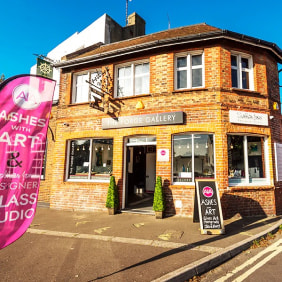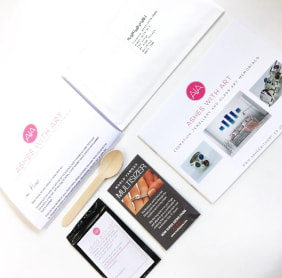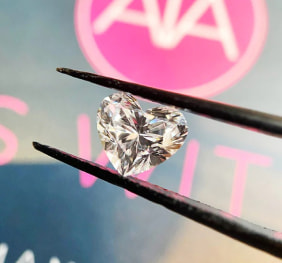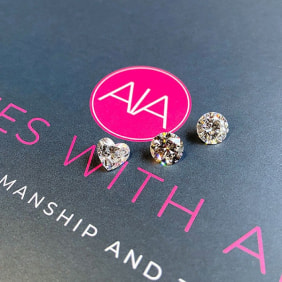Cremation Jewellery vs Memorial Tattoos: Pros & Cons
- ✓ Cremation jewellery is discreet, tactile and removable; styles include hidden-compartment and glass-gemstone pieces.
- ✓ Memorial tattoos are permanent tributes; some artists can mix sterile cremation ashes into ink.
- ✓ Jewellery can be taken off; tattoos are for life—choose based on how you want to remember and when.
After the death of a loved one, it’s common to look for ways to commemorate this loss. Keepsakes and memorials help those left behind to honour their loved ones, and there are plenty of ways we can achieve this.
Some people choose to raise money for charity as a way to work through their grief. Others will create memorial artworks to display in their home. And others will prefer to keep their keepsake with them at all times.
Both jewellery and tattoos are a popular way to commemorate the loss of a loved one. These are both creative outlets that can bring comfort to those grieving their loss. Carrying a symbolic portion of the ashes with you can help you to feel closer to those who have left us.
Cremation jewellery is becoming more widespread, and more and more tattoo artists are willing to include cremation ashes in tattoo ink. In this guide, we’re looking at how each method works and how it could help those who are grieving to move through this important process.
What is cremation jewellery?
Cremation jewellery often contains a small portion of cremation ashes. These could be stored safely in a hidden compartment, or they could be incorporated into a glass gemstone. Although an expensive process, it’s also possible to turn a loved one’s ashes into a diamond.
The most popular type of cremation jewellery is glass gemstone jewellery and secret compartment jewellery. These are two of the most durable and reliable types of jewellery, offering more resilience than materials such as resin.
Popular styles of cremation jewellery include rings, pendant necklaces, bracelets, bangles, charms, earrings and cufflinks. These might be worn every day, or they might be saved for special occasions.
Benefits of cremation jewellery
- Versatile and adaptable to a wide range of tastes and styles
- Small and discreet, so no one needs to know you are wearing a piece of memorial jewellery
- Jewellery is very tactile, which can provide support and comfort throughout the grieving process
- Can be taken off when the grieving process has passed, preventing the person from becoming trapped by their grief
Downsides of cremation jewellery
- There is a risk the item could be lost or stolen, which would be incredibly distressing
- Individuals can become trapped by their grief, relying on a piece of jewellery for support
- Tastes can change over time, so you might not like wearing it forever
What is a memorial tattoo?
There are two different types of memorial tattoos. First, you might choose a tattoo design that is simply a tribute to a loved one. Popular designs include decorative scripts of their name, angels, cardinals and other birds. Another option would be to go to a specialist tattoo artist who is able to add cremation ashes into the ink.
Cremation ashes are sterile and contain no genetic material, which makes it possible to add the finely ground ashes into tattoo ink. This then becomes part of the tattoo and is permanently part of the person’s body.
This isn’t for everyone, and some people might feel quite uneasy about the idea. But for those who find comfort in this idea, it can turn a simple gesture into a deeply meaningful tribute.
Benefits of a memorial tattoo
- A permanent and lasting tribute that can never be lost or stolen
- The perfect expression of grief, allowing the individual to choose a symbol that expresses their love for the individual
- Can include the ashes, or it could be a simple tribute
- The process of designing the tattoo can be cathartic and distracting for the individual, which can help to process grief
Downsides of a memorial tattoo
- Cannot be removed without painful laser procedures, which means the person might always be reminded of their grief
- Tattoos might not be permitted in some lines of work, so the individual could be impacting their employment prospects
- Your tastes might change over time and you might dislike the design in the future
- It’s vital to find a reputable tattoo artist with experience in handling cremation tattoos if you decide you would like to include the ashes
Deciding which is right for you
The final decision will often come down to the type of tribute you want to make to your loved one. A tattoo is for life, so you need to be confident that you’ll still love the design further down the line. Jewellery is removable, which allows you to process your grief and move on without always being reminded. But since it is removable, it will be at risk of getting lost or stolen.
You might choose to have a small tattoo in a spot that isn’t very visible, and pair this with a tactile piece of jewellery that can be worn and removed as the grieving process passes.
Cremation jewellery vs memorial tattoos: quick comparison
| Option | Benefits | Downsides |
|---|---|---|
| Cremation jewellery | Versatile; small & discreet; tactile support; removable when ready | Could be lost/stolen; reliance risk; tastes may change |
| Memorial tattoos | Permanent; expressive; can include ashes; cathartic design process | Difficult to remove; work restrictions; taste changes; must find reputable artist |





